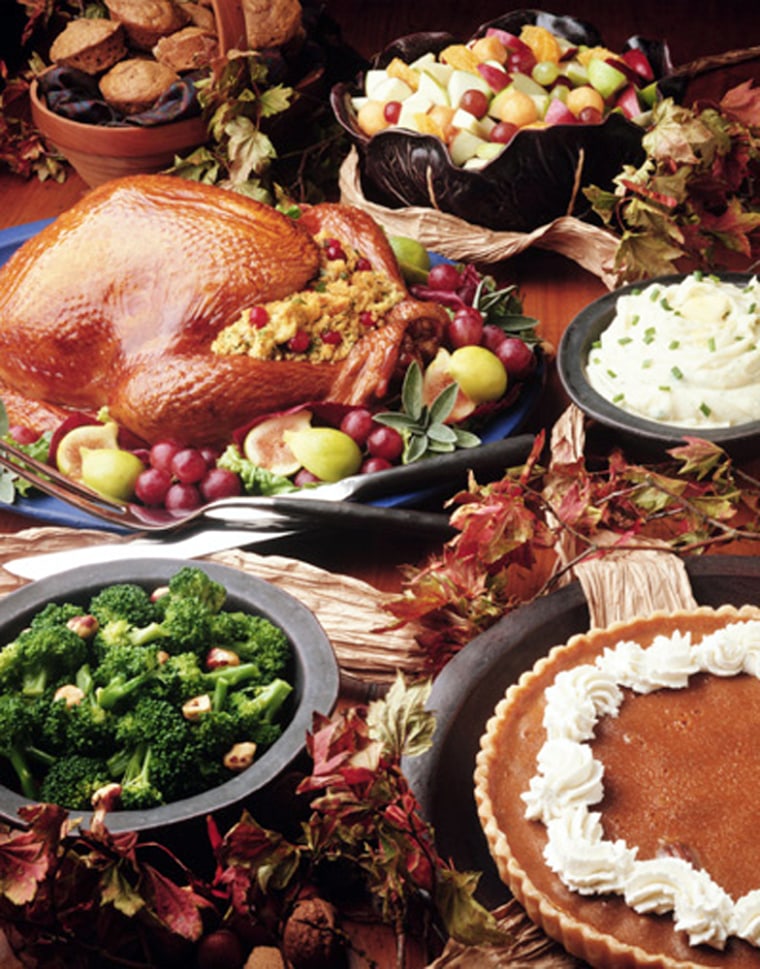Lobbying, intrigue, inflation and controversy, such are the historical ingredients in the recipe for Thanksgiving Day.
Most historical accounts of the nation’s first Thanksgiving put the date sometime in December of 1621 when the Pilgrims of New World America held a three-day harvest celebration. The elementary school textbook scene of Native Americans and Pilgrims sharing a banquet table, however, isn’t easily digested by everyone. The United American Indians of New England have, since 1970, held a “National Day of Mourning” on Thanksgiving Day in Plymouth, Mass., to highlight the plight of Native Americans dating from the arrival of the Mayflower.
America celebrated its first Thanksgiving under its new Constitution in 1789 with a proclamation issued by President George Washington. But the day didn’t rise to the level of an official federal holiday until 1863, smack dab in the middle of the nation’s bloodiest conflict, the Civil War, when President Abraham Lincoln proclaimed the day a national holiday. He set aside the last Thursday of November as the official day of celebration.
However, history credits Sarah Joseph Hale, editor of “Godey’s Lady’s Book,” as the force behind the national holiday. Seems that for 30 years Hale lobbied every single president until finally Lincoln listened, figuring it was a good way to help boost Union morale. After the war, Southerners were still suspicious of the national holiday, feeling it was a way to impose Yankee customs on their way of life.
Thanksgiving attracted controversy again in 1939 when President Franklin Roosevelt decided the official holiday should be held a week earlier. Merchants lobbied Roosevelt hard for the date change to give people an extra week of Christmas shopping. But the traditional date had been so ingrained in American culture that the move to a week earlier caused rancor among some citizens, who began calling the new date “Franksgiving.” In 1941 Roosevelt flip-flopped, admitted he had made a mistake, and signed legislation that set the fourth Thursday of November as the official date.
Pocketbook battle
Since 1986 the American Farm Bureau Federation has calculated the cost of Thanksgiving dinner for 10 people; the dinner being defined as “turkey, stuffing, cranberries, pumpkin pie and all the trimmings,” which comes out to be about 14 items. This year the AFBF says that dinner will cost $35.68, or 60 cents less than last year.
But the Indiana Farm Bureau has its own estimate; it calculates a similar dinner will run you $34.91, down a whopping $2.52 from last year. Meanwhile, the Wisconsin Farm Bureau also wants a piece of the action, estimating a turkey day dinner will cost an average of $36.64, an 85-cent increase from a year ago.
The United States will produce about 263 million turkeys this year, or nearly one for every man, woman and child in the country. In fact, the typical American will eat about 14 pounds of turkey in a year, the Census Bureau says, a figure that hasn’t changed much in over a decade. All those turkeys, at an average cost of $1.05 per pound, according to the upcoming Statistical Abstract of the United States: 2004-2005, create a market worth $2.7 billion.
Minnesota is the turkey capital of the United States, producing an estimated 46.5 million birds this year. The Gopher State is followed by North Carolina (39 million turkeys); Arkansas, Missouri, Virginia and California round out the top six turkey-producing states, accounting for two of every three turkeys sold in the U.S. But that doesn’t mean the bird you eat will be homegrown. The United States imported $11.4 million worth of turkeys in the first half of this year, and nearly all those came from Canada.
Mounds of fixings
The United States will produce 658 million pounds of cranberries this year, with Wisconsin expected to lead all states, producing 356 million pounds. Nearly 1.6 billion pounds of sweet potatoes will be produced in the United States, with North Carolina having the largest share of production, at 588 million pounds.
When it comes to pumpkins, the United States will produce an estimated 805 million pounds of the orange squash worth an estimated $81 million. Illinois leads all states by producing 326 million pounds of pumpkins. California, Ohio, Michigan, Pennsylvania and New York have their share of pumpkin patches; each of those states produces about 70 million pounds of pumpkins.
Despite the tremendous produce output, the United States last year imported $3 million of cranberries, nearly all of that from Canada, and $1.5 million worth of sweet potatoes from the Dominican Republic.
All that eating will pack on an average of 3,000 calories and 229 grams of fat per person on the big day, according to the American Council on Exercise in San Diego.
“A 160-pound person would have to run at a moderate pace for four hours, swim for five hours or walk 30 miles to burn off a 3,000-calorie Thanksgiving Day meal,” said Cedric Bryant, the group’s chief exercise physiologist.
That 3,000 calories can quickly balloon to about 4,500, warns Bryant, if the guest does a lot of snacking throughout the day.
This year there are 106 million occupied housing units in the United States, the Census Bureau says, all potential places to hold the day’s feast. To make the day really unique, one could travel to one of only three places in the United States named after the day’s traditional main course. There’s Turkey, Texas, with 507 residents, followed by Turkey Creek, La., (359 people) or Turkey, N.C. (267). There are eight places or townships named “Cranberry” or some variation of the name, such as “Cranbury” in New Jersey.
And lastly, there are 20 places in the United States named Plymouth, as in “Plymouth Rock,” where the Pilgrims allegedly landed in the New World … but that’s a whole other controversy.
